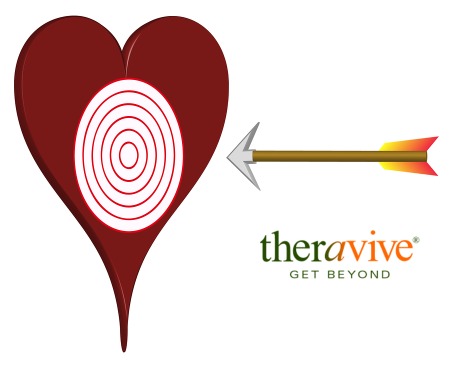
The science behind the “36 questions” that are the key to romance has been widely misrepresented. It seems that scientific findings trickle down from the laboratory to the general public in various forms. Sometimes it happens in the best way possible, like water through a drip coffee filter, so that one ends up with a pleasant, stimulating brew of digestible knowledge without the bitter taste of mystifying scientific terminology. Other times, the brew is watery, and someone has added too much sugar. That is, substantive information is often missing, but mention of a basis in science is used to entice people who are hungry for answers. Misleading information is included to sweeten the pot, and sometimes harmful fallacies are included. This is the case regarding the reports of the “36 questions” which some media authors are promoting as a sure-fire way to make couples fall in love.
Talk of “The 36 questions” has found its way into the popular press over the past year and a half. More recently, their discussion has hit the streets and they are now touted as a test of partners’ willingness to explore their potential for love, as well as a formula for sealing the deal (Cohen, 2015). The title of an article published in January brought this particular interpretation of a complex scientific study to the forefront: “To Fall in Love with Anyone, Do this” (Cantron, 2015).
Cantron claims that Arthur Aron, a social psychologist and researcher, attempted to make people fall in love in his laboratory. In her eroticized version of the study, she explains that men and women were paired up and led into a lab through separate doors and seated facing one another. They were instructed to ask one another progressively probing questions, and at the end, the couple stared into one another’s eyes for four minutes. Cantron shares her own, very romantic story about how she fell in love sitting in a bar with an acquaintance after they performed this procedure. She ultimately does grant that the questions were not wholly responsible for their feelings, and underscores their choice to fall in love. However, that statement was not what lingered in peoples’ minds. A few days later, an article in Vogue (Garcia, 2015) referred to the questions as “revolutionary” and cited another couple who quickened the process of falling in love by following Cantron’s lead.
A Closer Look at the Research
Elaine Aron (2015), Arthur Aron’s wife and co-author of these studies, responded in an article to the claims made about the purpose of the research. She underscores that the questions were not created to make people fall in love. However, procedures like the one used in their research has been successful in real-world circumstances in the fight against racial prejudice and in unifying communities and law enforcers.
A closer look at the Arons’ work reveals some other important details to consider. First of all, the “36 questions” were created initially by Aron (1997) and his colleagues for use in three studies jointly reported under the title “The Experimental Generation of Interpersonal Closeness: A Procedure and Some Preliminary Findings.” The Arons’ quest was to learn more about how close relationships develop; the questions were simply a research tool. Their goal was to see if various conditions, as suggested by existing theoretical constructs, enhanced creation of transient feeling of closeness.
The subjects were volunteers from large college psychology classes. They were paired according to their responses to questionnaires that were relevant to the variables examined in each study, and seated together (not necessarily face-to-face) at a moderate distance from the next pair of subjects (they were not led through separate doors into a room). The researchers took care to be sure that members of each pair did not know one another, however, they had been in class together for long enough to have noticed each another. Participants were given directions regarding how to proceed, for example, they were closely timed. At the end, they filled out other questionnaires to gauge their feelings about their partners. The pairs were not asked to stare into one another’s eyes during the course of the studies.
Ultimately 151 couples, both cross-sex and same-sex participated. Another hint that the goal was not to make the couples fall in love: no effort was made to determine the sexual preference of the participants.
The Results of the Studies
The findings of these studies were very important indeed. First, pairs that engaged in the more probing questions rated themselves as significantly closer than those who engaged in small talk. Significantly higher ratings of closeness were seen in the pairs that took on the more personal questions regardless of whether they had conflicting attitudes, or whether they were led to believe they would like each other.
What seemed to matter the most were subjects’ attachment styles and whether participants were introverted or extraverted. People who were more reluctant to attach to others (avoidant/dismissive types), reported less closeness than those who were more comfortable attaching (secure types). Extraverts tended to report more closeness than introverts, except when the participants were given explicit instructions to get close to one another.
Immediately after the study, subjects rated the relationships with their partners similarly to how 30% of their peers (not in the study) rated their closest relationships. Subjects also rated their feelings of closeness to their partner as similar to the average relationship in their lives or other peoples’ lives. Data collected after the students were debriefed showed that 57% of the couples had at least one subsequent conversation, 35% had done something together, and 37% sat together in class. The procedure did seem to create a temporary sense of closeness in many participants.
Arthur Aron was quick to note that there were no control groups used in any of these studies. Therefore, we don’t know if the same percentages might have been reached if the experiment had never been done in these classes. Indeed, college students make friends in classes. And out of the 151 pairs that participated, one was married, as Cantron mentions. We don’t know if on average, within a group of 302 college students, there is one pair that marries.
Be Careful of Your Expectations
Aron also qualifies his findings, stating “it seems unlikely that the procedure produces loyalty, dependence, commitment or other relationship aspects that might take longer to develop.”
So, before you fire up your 36 questions app, take these tips from Elaine Aron: The questions were designed with the work of many researchers in mind who had shown that a sense of closeness can be attained by “sustained, escalating, reciprocal self-disclosure.” That is to say, the questions start out lighter, and gradually get deeper. Also feel free to choose only a few from each set, and create your own that are more relevant to you and your partner. Last, she emphasizes the power of responding to your partner’s disclosures.
And a caveat: The process of answering the questions will only be useful in generating closeness if both parties are willing. There is nothing magical about them. I imagine that the last thing the Arons would want is for members of couples to feel like they had to prove their love by answering these questions, or for them to go into the process worrying that they might say something that would blow their chances. Pushing the questions on your partner is a recipe for alienation and isolation, not intimacy.
References
Aron, A., Melinat, E., Aron, E., Vallone, R.D., Bator, R.J. (1997). The experimental generation of interpersonal closeness: A procedure and some preliminary findings, Personality and Social Psychology Bulletin, Vol. 23 363-377.
Aron, E. Jan. 16, 2015. 36 Questions for Intimacy, Back Story, Huffpost Healthy Living
Cantron, M.L. Jan. 9, 2015. To Fall in Love With Anyone, Do This, New York Times
Cohen, C. 20 Jan. 2015. These 36 questions can make you 'fall in love with anyone', The Telegraph
Garcia, P. Jan. 15, 2015. It’s Crazy, But That “Fall in Love With Anyone Questionnaire” Really Does Work, Vogue
About the Author
 Dr. Johanna Tiemann, Ph.D.
Dr. Johanna Tiemann, Ph.D.I am a licensed psychologist, a psychoanalyst, and a hypnotherapist with over twenty years of experience working with adults and couples suffering from a wide range of problems. I believe that the key to creating a meaningful experience in therapy hinges on my ability to listen closely and to do my best to put myself in another person’s shoes.
Office Location:
215 West 90th Street, #4F
New York, New York
10024
United States
Phone: 212-662-0152
Contact Dr. Johanna Tiemann
Professional Website:
www.johannatiemann.com